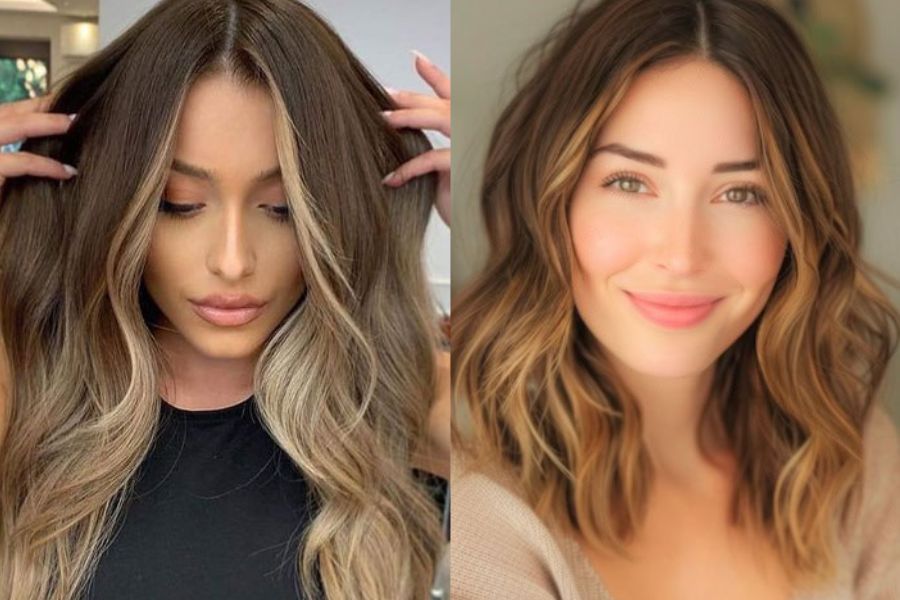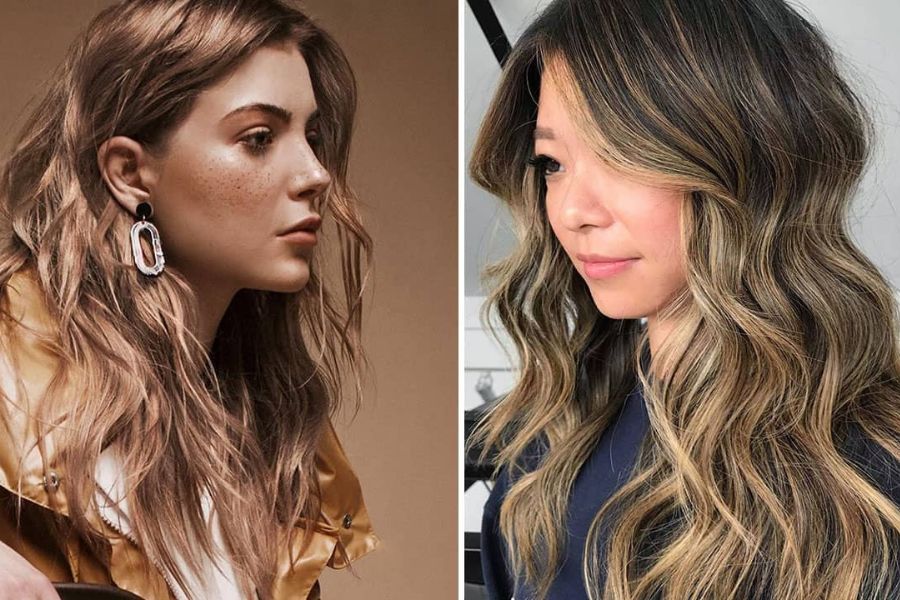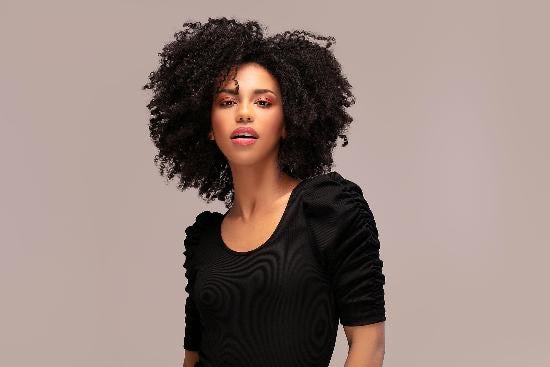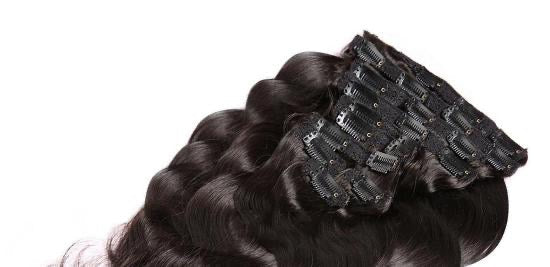Hair Extensions For Thin Hair: Types & How To Choose

Key Takeaways
- The best hair extensions for thin hair are lightweight and easy on the roots, while heavy extensions can cause breakage or stress on delicate strands.
- Clip-in, tape-in, halo, and ponytail extensions are ideal for thin hair because they lie flat, blend naturally, and add volume without damaging your real hair.
- For more permanent options like hand-tied or K-tip extensions, always go to an experienced stylist to avoid tension or improper placement that could harm thin hair.

Hair extensions for thin hair. Source: Foxy Locks
Ready to add volume the safe and stylish way?
Shop premium-quality, lightweight hair extensions for thin hair at Livicor Hair - where flawless blends and gentle beauty begin.
How Do You Choose The Best Type Of Hair Extensions For Thin Hair?
If you’ve ever looked in the mirror and felt like your hair looks flat or sparse, you might have thin hair. But don’t worry, you’re not alone, and there are great solutions out there to add volume without damaging your strands.
Let’s break it down.
Thin hair means you have fewer hair strands on your scalp, while fine hair refers to the thickness of each strand. Many people actually have both fine and thin hair. This combo can make it harder to get that full, bouncy look, but the right hair extensions for thin hair can make all the difference.
1. Go Lightweight
You want extensions that feel natural and don’t pull on your hair. Avoid heavy sets that are over 200g, as they can cause tension and breakage. Look for lightweight hair extensions for thin hair that add fullness without stressing your scalp.
2. Choose Blending Styles
Clip-in or tape-in extensions are a great pick. They lie flat against your head, are easy to hide, and won’t tug on your roots. These styles blend in beautifully with your natural strands and are gentle on fine hair.
3. Keep It Close in Length
For the most natural result, go for extensions that are only a few inches longer than your real hair. This gives your hair a thicker, fuller look without making it obvious that you’re wearing extensions.
4. Talk to a Pro
Still unsure? Don’t guess, reach out to a hair specialist. They can help you find the right type, length, and weight of hair extensions for thin hair that match your texture and lifestyle.
See more: Hair Extension Lengths: How to Pick the Right Length for You?
Are Hair Extensions Bad for Thin Hair?
Hair extensions are meant to solve thin hair problems, not make them worse. But the truth is, it depends on the type of extensions you choose and how they’re applied. When done correctly, hair extensions for thin hair can safely add volume and length without damaging your natural hair.
The real issues come up when the wrong type or method is used. For example:
- Using the wrong texture: If your natural hair is fine or thin and you choose extensions meant for medium to thick hair, they will be too heavy. This mismatch can pull on your roots and cause breakage, not to mention they’ll look unnatural.
- Too-large bonds: For fusion or keratin methods, using large bonds on thin hair is a no-go. Micro bonds are much better. They’re lighter, more discreet, and blend in easily. They’re a great way to create invisible hair extensions for thin hair that no one will notice.
- Too many strands: Even if the hair texture is right, using too many strands adds weight your hair can't support. This strains the scalp and weakens the hair follicles over time. Lightweight sets are your best friend when it comes to extensions for thin hair.
- Poor installation: Sometimes the stylist might not be trained in the proper technique. For example, people worry about whether hand-tied or k-tip extensions are good for thin hair. But the truth is, they can be! Both are safe if applied by an experienced professional who understands how to handle delicate strands.
It’s also important to remember that thin hair can become even thinner due to other factors like:
- Harsh hair products with damaging chemicals
-
Frequent bleaching or coloring
Overuse of chemical treatments - Chronic stress
- Hormonal imbalances
See more: 5 Best Hair Extensions for Thin Hair or Fine Hair
Best Hair Extensions For Thin Hair
If you have thin or fine hair, you probably already know how challenging it can be to achieve a full, voluminous look without making things worse. Some extensions can be too heavy or bulky, causing tension on your natural hair and even leading to breakage.
That’s why it’s so important to choose the best hair extensions for thin hair, those that are lightweight, discreet, and gentle on your roots.
Not all extensions are created equal, especially for delicate hair types. So let’s break down the best type of hair extensions for thin hair, from temporary clip-ins to semi-permanent tape-ins, and why each might be the right fit for you.
1. Clip-In Hair Extensions
Clip-in hair extensions are one of the easiest and safest ways to add volume and length, especially if you don’t want a long-term commitment. These extensions come in wefts with small, secure clips that attach directly to your natural hair.
What makes clip-ins one of the best hair extensions for thin hair is that they are lightweight and low-maintenance. You can apply them in minutes, style them any way you like, and take them out just as quickly. They don’t require heat, glue, or salon visits, making them a great, damage-free option.
For example, Livicor Hair’s clip-in extensions are made to be ultra-light while still giving you that full-bodied, glamorous look. Because they come in various lengths, colors, and weights, you can find a set that blends in seamlessly with your fine strands.

Kinky Coily Clip-in Hair Extensions. Source: Livicor Hair
Best for: Everyday use, special occasions, and beginners who want flexibility without permanent changes.
2. Tape-In Hair Extensions
Tape-in extensions are a game-changer for thin hair. These are flat, adhesive wefts that “sandwich” a section of your natural hair between them. Because the wefts are thin and lightweight, they lay flat against your scalp and blend beautifully with finer strands.
What sets tape-ins apart is how they distribute weight evenly, reducing the risk of breakage or stress on the roots. They’re considered one of the best types of hair extensions for thin hair because they stay secure while still being gentle and nearly invisible.
Tape-ins can last 6 to 8 weeks before they need to be reinstalled or moved up. They’re also reusable, which means with proper care, you’ll get multiple uses out of the same set. Livicor Hair offers high-quality tape-in extensions made with Remy hair, which means the hair cuticle is kept intact for a smooth, tangle-free finish.

Deep Curly Tape-in Hair Extensions. Source: Livicor Hair
Best for: Semi-permanent wearers who want a salon-quality look that lasts without damaging their natural hair.
See more: How to Remove Tape In Extensions at Home (Expert Tips)
3. Ponytail Hair Extensions
If you're someone who loves wearing your hair up but always feels like your ponytail looks a little… flat, ponytail extensions are a quick and easy fix. These clip or wrap-around pieces attach to your natural ponytail and instantly make it look fuller and longer.
Ponytail hair extensions are super lightweight, which makes them safe for thin hair when worn occasionally. They’re also incredibly easy to use - clip, wrap, and go. You don’t have to worry about blending them with your hair texture as much, since the style itself hides the base.
Livicor Hair’s micro-ring hair extensions are designed for comfort and style, offering volume without adding unnecessary weight. They come in various textures and lengths, so you can find one that works perfectly with your natural curl pattern or straight strands.
 Ponytail hair extensions. Source: YouTube - DramaticMac
Ponytail hair extensions. Source: YouTube - DramaticMac
Best for: Quick styling, special events, or anyone who wants to upgrade a basic updo without the damage.
4. Halo Hair Extensions
Here’s an underrated favorite for thin hair: halo extensions. These are single wefts of hair attached to a clear, invisible wire that sits on top of your head like a headband. There’s no glue, clips, or bonding required; it simply rests securely and blends with your natural hair.
The best thing about halo extensions is that there’s zero stress on your scalp. Since they don’t attach to your actual strands, they’re one of the safest hair extensions for thin hair. Plus, they’re incredibly easy to put on and take off. No stylist needed!
This option is especially great if you want longer, thicker hair for a night out or photoshoot without wearing extensions all day or overnight. The halo extension sits comfortably and can be styled just like real hair.
Best for: Total beginners or anyone looking for a quick, no-damage solution for fuller hair.

Halo hair extensions. Source: Sitting Pretty Halo Hair Extensions
5. Hand-Tied & K-Tip Extensions (With a Pro Only)
While clip-ins and tape-ins are the top choices for most people with fine hair, hand-tied and keratin-tip (K-tip) extensions can also be safe options, but only when done by an experienced stylist.
Hand-tied extensions involve sewing wefts onto a small, invisible row of beads. K-tip extensions use tiny keratin bonds that are melted onto your natural strands. These methods can work well with thin hair if the technician uses the correct number of wefts and the right weight.
The key here is customization. If too many strands are used, or the bonds are too large, it can put too much stress on your hair. But when done properly, they can look incredibly natural and offer long-lasting results.
Best for: Those looking for a more permanent transformation with the help of a certified stylist who specializes in fine or thin hair types.

K-tip and hand-tied hair extensions. Source: Slavic hair extensions







Comments